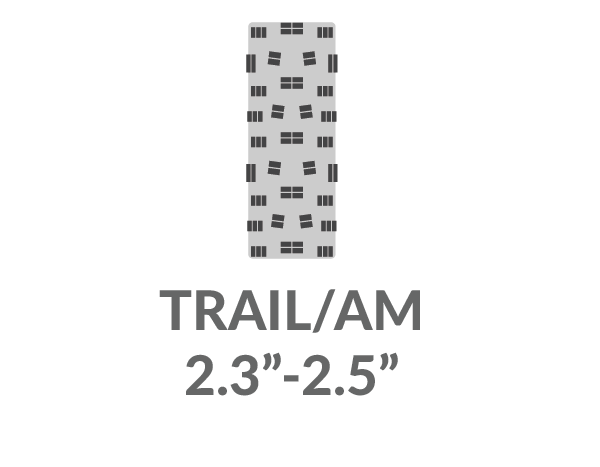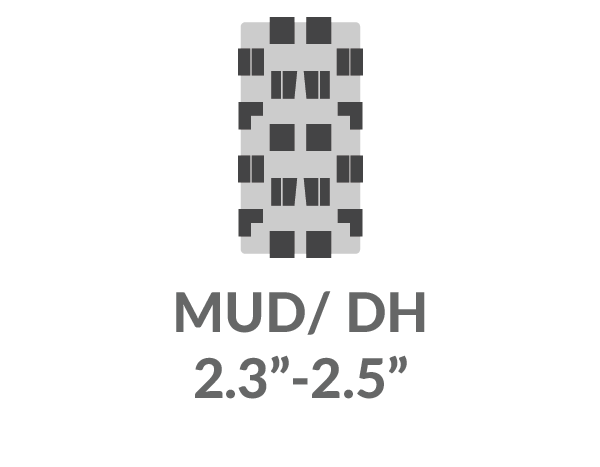Featured Brands
Recommended Products
WINTER20
|
Get free shipping, on most items, with your $50 purchase today! Same day shipping on most orders if placed by 3pm PST.
PLEASE NOTE:
This offer is only available to physical shipping addresses in the 48 continental United States (no PO Boxes), and some exclusions apply.
Oversize Charges
Some large and/or heavy items are subject to additional oversize charges that are separate from standard shipping costs.
Bike Build Process
All bikes are built, tested, tuned, and ready to ride upon shipment. The bike build process typically takes 2-3 days to complete depending on the bike model and the complexity of the build.
Stock Status
Orders for in-stock items placed by 3PM PST usually ship on the same day. Orders that include special-order or backordered items may be subject to shipping delays depending on product availability. Refer to estimated delivery times in cart when selecting shipping options.

Our Gear Advisors are Ready to Help.
Jenson USA carries one of the most extensive selections of curated bike gear online. We’ve developed learning guides to aid you in making informed decisions and we have backed this up with our expert Gear Advisors who are available by phone, chat, or email 7 days a week.
Mountain bikes are used for many disciplines and there are different tire demands for each category. This adds another element to consider when selecting tires for your next bike. Choosing the wrong tire can make a rocket ship XC bike feel like pedaling in mud or make a downhill bike slip and slide all over the place. Below will outline differences between tire materials, style and what makes a set of tires best for each discipline.
Depending on tread design a tire can be fast and planted on loose dry dirt or grippy when the conditions are wet and slippery. There are a few tire tread categories that vary depending on what category of riding you do and the soil conditions found in that area.
The contact patch that your tire makes on the ground is dependent on the width of your tire. A narrower tire makes a smaller contact patch that decreases the rolling resistance and less traction. A wider tire will provide a larger contact patch providing more grip but and more rolling resistance. The width of tires is measured in inches and range from 1.95” - 2.8” with some outliers
For XC racers you'll see tires that have lower profile knobs that will grip on better on packed dirt while not slowing the rider down. The lower profile knobs are used to maintain speed over flats and up hills.
Most XC oriented tires will range between 2.0” - 2.2”. XC riding is less technical and there is not a demand for large tires that provide added traction. With a narrower tire there is less tire travel. Tire travel is important when riding rough terrain. With narrower tires a higher tire pressure is required to protect the rim from rocks and roots. The main thing to consider for tire width in XC is rolling resistance V.S traction.
SHOP MTB TIRES
The tread patterns for the Trail and All Mountain categories focus more on direction and braking control rather than rolling resistance. To achieve this the knobs tend to be larger and spaced further apart. The larger knobs are going to dig into loose dirt and provide more grip on steeper and more unpredictable terrain. There will be variation in tread patterns suited for different soil conditions. For example, tires with large blocky knobs are used for the muddy and wet dirt ridding that is common in the Pacific Northwest. Where in the dryer climates like Moab and Sedona it is common to run a medium sized knobby tire on the front for braking in the dust paired with a semi slick tire in the rear for added traction when riding down slick rock. A semi slick tire has large knobs on the side of the tire to grip while cornering but the center tire pattern in composed of smaller knobs similar to XC patterns.
Trail and All Mountain riders benefit from wider tire profiles. Most of the tires in this category are between 2.3” - 2.5” in width. This allows the knobs on these tires to be spaced further apart so the contact patch is wider and able to flex around imperfections found on the trail. With the added width these tires also have more tire travel allowing riders to navigate less carefully over roots and rocks with lower chances of rim damage.
SHOP MTB TIRES
Tire tread patterns for the downhill category are similar to Trail and All Mountain but bigger and burlier. These tread patterns are designed for all out grip in corners, braking in steeps and holding in deep dirt or off chamber.
Downhill riding continues the trend of going wider. These tires are between 2.3” - 2.5” in width. Similar to Trail and All Mountain the added width increases the contact patch size. Since these tires have the highest amount of tire travel they protect their rims the best from damage allowing riders protection run after run on gnarly terrain.
SHOP MTB TIRES
Fat bikes tires have largest contact patch with widths in the 4.0” - 5.0” range. Where a standard 2.3” width tire will sink into sand and snow, fatter tires float on top and allow riders to enjoy trails and scenery previously unreachable. With these balloon like tires riders get a much larger contact patch allowing them to maintain traction on very loose and unstable terrain. These tires also have much more tire travel allowing riders the highest level of comfort. The Mid-fat tire size shrinks slightly with widths ranging from 2.8” - 3.8”. These tires still give unrivaled traction and tire travel albeit less than a true fat tire. This width shines by giving trail riders more traction in technical climbing and turning with the tradeoff being that it rolls slower than a standard 2.3 inch tire. Both fat and mid-fat tires can only fit in frames designed for their abnormal width and cannot be installed into every frame.
SHOP MTB TIRES
The casing of a tire is the sidewall and section of the tread that holds the knobs of the tire. This section of a tire affects the suppleness of a tire and also the life span. Lighter weight casings will give a rider more comfort but can be more prone to tear while heavier casings provide a more stable feeling tire and hold up to more abuse.
Most XC tires run a lighter casing to keep the weight down and rolling resistance minimal. XC tire casings come in racing thickness and everyday use. The weight and rolling resistance of a race casing XC tire is next to nothing so that the racers can have the lightest fastest bike possible. Durability will be the main problem as these tires will be more prone to sidewall failure. The everyday use XC casing will be slightly heavier and provide longer tire life.
Trail and Trail tires run slightly thicker casing since these tires are put through more abuse. With the likelihood of the tires scraping against sharp rocks the thicker casing is able to handle the abuse without tearing. The thicker casing also makes the tire more stable, resisting flex or fold while rolling over obstacles. These tires run a mid range tire pressure. The thicker casing helps protect rims but the speed that riders carry into rough terrain doesn't allow for extremely low pressures.
Since durability rules the world of Downhill these tires have the thickest casings. The increased thickness of downhill tires make the ride quality feel damped. It is much harder to cut or tear downhill casing so running headlong into rough sections is acceptable. This casing also provides the most rim protection of the three categories of mountain biking.
The rubber compound will impact the tackiness of a tire and its longevity. If tire longevity is your main priority then choosing a hard knob rubber compound is best. This rubber molds less to the trail and is best for training or bikes ridden over many miles that need lasting knobs that won’t wear quickly.
Soft rubber compounds give the tire a tacky feel that grips in all conditions. The life span of soft rubber tires is much shorter and depending on terrain can wear out quickly. The extra traction is the main performance benefit of the soft rubber and many riders choose to run the softer tires and replace them more often for that reason.
Some companies mix rubber compounds in the tread so they can get a long lasting tire that still hooks up when things get slick. In these tires the center knobs are a harder rubber compound for supporting the majority of the riders weight, paired with a softer rubber on the side knobs for grip when the bike is turning. The experimentation in multiple compound tires has yet to reach its full potential
Running a tube inside bicycle tires has been gold standard for years and continues to lead in reliability for many mountain bikers. Though tubes are tried and true, there have been advancements to reduce weight by removing the tube and replacing it with a small amount of sealant. This drastically reduces the wheels rotating weight making the bike feel more nimble. Another downside of tubes is pinch flats. When running lower pressure the tube can get stuck between the tire when compressed and pinch a hole in the tube. Since there is no tube in tubeless tires, pinch flats are not an issue. No one likes getting punctures and since there is sealant inside tubeless tires, small punctures will be sealed instantly with the sealant in the tire. This allows the rider to keep riding without a need to stop and replace the tube.
There are a few companies who make foam inserts that can be put inside tires to help improve tubeless tire performance even more. These inserts allow riders to run even lower pressure while providing a bottom out bumper to help protect rims. This can be done via foam inserts or small inner tube like systems
SHOP TUBES AND TUBELESS KITSWith new tires it's important to think about width and casing when finding the right tire pressure. A rider will have different tire pressures based on casings types and widths. Tinkering with tire pressure on new tires will help find out where they preform best for you. Riding style and terrain also have a big impact on pressures. For riders who prefer to carve around corners and keep glued to the ground lower tire pressures seem to suit well. For riders who push hard into corners and jumps will require higher pressures to keep tires from squirming around
With new tires it's important to think about width and casing when finding the right tire pressure. A rider will have different tire pressures based on casings types and widths. Tinkering with tire pressure on new tires will help find out where they preform best for you. Riding style and terrain also have a big impact on pressures. For riders who prefer to carve around corners and keep glued to the ground lower tire pressures seem to suit well. For riders who push hard into corners and jumps will require higher pressures to keep tires from squirming around
SHOP MTB TIRESWe want to make sure you can go from shopping to riding as soon as possible. Our expert Gear Advisors are available to help you cater your protection setup with just the right combination of protection and comfort. Contact a Gear Advisor: 888-880-3811, Mon-Fri: 7:30am to 7pm, Sat-Sun: 9am to 5pm (PST)
SHOP NOW
SHIP ALMOST ANYTHING & SAVE
SHOP NOW
SHOP NOW
SHOP NOW